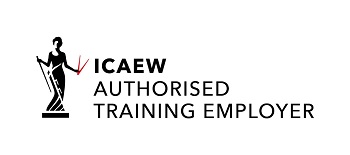
Here’s the truth nobody tells you about becoming an executor: you’ll spend more time wrestling with HMRC forms than grieving properly. The IHT 400 form—all 12 pages of bureaucratic bewilderment—sits there mocking you whilst you’re still figuring out how to access the deceased’s bank account.
I’ve watched countless executors stumble through this process, clutching printouts and muttering about schedules they never knew existed. The Inheritance Tax form IHT 400 isn’t just paperwork; it’s your gateway to either smooth estate administration or months of back-and-forth correspondence with HMRC that’ll make you question your life choices.
But here’s what the government guidance won’t tell you: this form follows a logic, albeit a twisted one. Once you crack the code, the IHT 400 transforms from an insurmountable mountain into… well, still a fairly substantial hill, but one you can actually climb.

When Your Estate Demands the Full Monty
Not every estate needs the IHT 400 treatment. The shorter IHT 205 might suffice if you’re dealing with smaller estates or specific exemptions. But if any of these ring true, you’re in IHT 400 territory:
- The estate’s gross value exceeds £325,000 (the nil-rate band). Obviously.
- The deceased owned foreign assets worth more than £150,000.
- There are complex trust arrangements involved—and I mean properly complex, not just “Uncle Bob left everything to his cat” arrangements.
- The estate includes business assets or agricultural property claiming relief.
Quick reality check: Even if inheritance tax isn’t actually payable, you might still need this form. HMRC loves its paperwork, and they want to see your working. If you’re unsure about thresholds, our inheritance tax calculator can help you determine if you’re in IHT 400 territory.
Gathering Your Arsenal: Documents That Matter
Before you even think about touching that IHT 400, you need ammunition. I’m talking about a document mountain that would make Everest jealous.
Financial statements from every institution the deceased ever breathed near. Banks, building societies, premium bonds, ISAs—if it held money, you need statements. Don’t just grab the most recent ones; HMRC wants to see the balance on the date of death, which might require specific valuations.
Property valuations deserve special attention. That family home might be worth more than anyone imagined, especially in today’s absolutely bonkers property market. Get professional valuations for anything substantial—your guess won’t cut it with HMRC. Consider using RICS-qualified surveyors for accurate property assessments.
Personal possessions can be trickier than you’d expect. Yes, that china set probably isn’t worth much, but that vintage watch collection? The art hanging in the hallway? These need proper assessment, not your best estimate.
Insurance policies are often forgotten until they become urgent. Life insurance payouts, pension death benefits, other financial products that pop up like mushrooms after rain—all can significantly impact the estate’s value.

Decoding the IHT 400’s Secret Language
The form itself reads like it was designed by someone who actively despises executors. Let me translate the key sections:
Pages 1-2 want basic details about the deceased and you as the executor. Straightforward enough, though they manage to make even name and address feel complicated.
Pages 3-4 dive into the estate’s assets. This is where your document gathering pays off. Every bank account, every investment, every valuable possession gets listed here. The form wants values as of the date of death—not when you’re filling it out weeks later.
Page 5 covers debts and liabilities. Don’t forget the obvious ones like credit cards and loans, but also consider funeral expenses, outstanding utility bills, and professional fees for estate administration.
Here’s where it gets interesting: Pages 6-8 deal with exemptions and reliefs. This section can dramatically reduce inheritance tax liability, but only if you understand what you’re doing.
| Relief Type | Maximum Reduction | Common Pitfalls |
|---|---|---|
| Spouse Exemption | Unlimited (if UK domiciled) | Assuming foreign spouses get same treatment |
| Charity Exemption | Unlimited | Forgetting to claim reduced rate for 10%+ charitable gifts |
| Business Relief | 50% or 100% | Misunderstanding qualifying criteria |
| Agricultural Relief | 50% or 100% | Complex occupation requirements |
The Schedules: Where Dreams Go to Die
If the main IHT 400 form is challenging, the schedules are where things get properly messy. These supplementary forms cover specific types of assets and situations, and you’ll probably need several.
IHT 407 (Household goods) seems simple until you’re trying to value Great Aunt Mildred’s extensive thimble collection. The form wants categories and values, but doesn’t offer much guidance on valuation methods. Helpful, right?
IHT 412 (Joint and nominated assets) trips up many executors. That joint bank account doesn’t automatically pass outside the estate—HMRC wants to know who contributed what. Good luck reconstructing that from 15-year-old bank statements.
IHT 409 (Pensions) has become increasingly important as pension freedoms have changed how death benefits work. Modern pension arrangements can be fiendishly complex, especially with discretionary death benefits.
Random personal story: I once spent three hours trying to figure out how to classify a deceased person’s cryptocurrency holdings. (Spoiler: it went under “Other assets,” and HMRC still hasn’t figured out how to properly handle digital currencies.)
Timing: The Cruel Mistress of Estate Administration
Here’s the kicker that catches everyone off guard: you generally need to file IHT 400 within 12 months of death. Miss this deadline, and HMRC starts charging interest on any inheritance tax due.
But here’s the really twisted part—if you need a Grant of Probate to access assets (which you usually do), you might need to pay some inheritance tax before filing the complete IHT 400. It’s a Catch-22 that would make Kafka proud.
The payment-on-account system allows you to pay based on initial estimates, then adjust when you file the full return. This prevents the whole process grinding to a halt, but it means making educated guesses about tax liability. For help with tax calculations and planning, consider our corporate tax planning services if the estate includes business assets.
Professional tip: If you’re genuinely stuck waiting for asset valuations, HMRC can be surprisingly reasonable about extensions—if you ask nicely and explain the delay. For guidance on dealing with HMRC correspondence and investigations, see our HMRC investigations service.
Common Mistakes That’ll Cost You Sleep
After years of watching executors navigate this process, certain mistakes appear with depressing regularity:
Undervaluing assets might seem tempting, but HMRC has surprisingly good intelligence about property values and market rates. They will notice if your valuation seems suspiciously low.
Forgetting about gifts made in the seven years before death. The deceased might have mentioned that £15,000 they gave their daughter for her wedding, but did they tell you about the regular payments to grandchildren? Probably not. Check the seven-year rule carefully.
Misunderstanding domicile rules for foreign assets. Just because someone lived in the UK doesn’t automatically make them UK domiciled for inheritance tax purposes.
Claiming reliefs incorrectly is perhaps the costliest error. Business property relief has strict qualifying conditions—owning shares in your local pub doesn’t automatically qualify if you weren’t involved in running the business.
⚠️ Warning: When Professional Help Stops Being Optional
Let me be blunt: if the estate involves business assets, foreign property, complex trust arrangements, or potential tax liability above £50,000, you need professional help. The cost of getting it wrong far exceeds professional fees.
At Ask Accountant, we’ve guided hundreds of executors through IHT 400 preparation, and the relief on people’s faces when they realise they don’t have to decode HMRC’s cryptic guidance alone is genuinely heartwarming. Sometimes inheritance tax planning and professional advice isn’t about saving money—it’s about saving sanity.
The signs you’re out of your depth include:
- Spending more than two hours trying to understand a single schedule
- Googling “what counts as agricultural property” at 2 AM
- Having dreams about HMRC correspondence
🚩 Red flag warning: If you discover assets or complications after filing, you’ll need to submit an amended return. This isn’t necessarily a disaster, but it’s much easier to get things right first time.
The Technology Trap
HMRC’s online system for IHT 400 promises to make life easier. Sometimes it does. Sometimes it crashes when you’re 90% through data entry, losing everything because the autosave function decided to take a holiday.
My advice? Use the online system but keep detailed notes separately. Screenshot important pages. Save frequently. The system’s validation checks can catch obvious errors, but they can also reject perfectly valid entries for mysterious reasons.
The PDF version might seem old-fashioned, but it’s reliable. You can’t lose your work to a server crash, and you can complete it offline without worrying about session timeouts.
| Filing Method | The Good Stuff | The Annoying Bits |
|---|---|---|
| Online System | Built-in calculations (mostly accurate)<br>Instant validation checks<br>Faster processing times | Random technical meltdowns<br>Session timeouts mid-entry<br>Can’t work offline |
| Paper Forms | Never crashes on you<br>Work anywhere, anytime<br>Physical backup copy | Manual maths (ugh)<br>Slower HMRC processing<br>Royal Mail dependency |
The Final Countdown: Submission and Beyond
Once you’ve wrestled the IHT 400 into submission, the story doesn’t end. HMRC typically takes 4-6 weeks to process returns, assuming they don’t have questions.
And they will have questions. Count on it.
The most common queries involve asset valuations and relief claims. HMRC might want additional evidence for property values, especially if they seem inconsistent with local market data. They’re particularly keen on business relief claims, wanting detailed information about company activities and share ownership.
Don’t panic if HMRC writes asking for clarification. Their letters often sound more aggressive than intended (I suspect they have a “threatening correspondence” training course). Most queries are resolved with straightforward explanations and supporting documents.
Keep everything. Every valuation, every bank statement, every piece of correspondence. HMRC can ask questions for up to four years after assessment, and you’ll need evidence to support your original entries.
The Light at the End of the Tunnel
Here’s what nobody tells you about completing IHT 400: the sense of achievement is genuinely satisfying. You’ve navigated one of the government’s most complex forms and emerged victorious.
More importantly, you’ve properly discharged your duties as executor. The beneficiaries might not understand the complexity of what you’ve accomplished, but you’ve protected their interests and ensured the estate complies with tax obligations.
Yes, the IHT 400 is a beast. But it’s a conquerable beast, especially with proper preparation and realistic expectations. Take it one section at a time, don’t rush, and remember that professional help is available when you need it.
The deceased chose you as executor because they trusted your judgment. Trust yourself to get through this process—even if it takes longer than you’d hoped and involves more coffee than is strictly healthy.
For complex estates or when you simply need reassurance that you’re on the right track, Ask Accountant offers comprehensive inheritance tax advice and IHT 400 preparation services. Sometimes the best decision is recognising when you need support. Call us on +44(0)20 8543 1991 or visit us at 178 Merton High St, London SW19 1AY.
Frequently Asked Questions
Do I always need to file IHT 400 for estates over £325,000? Not necessarily. If the estate qualifies for spouse exemption or other reliefs that bring the taxable value below the threshold, you might only need IHT 205. However, HMRC sometimes wants to see the working even when no tax is due.
Can I file IHT 400 before getting all asset valuations? HMRC prefers accurate valuations, but they understand that some assets take time to value properly. You can request extensions for genuine delays, or make reasonable estimates and adjust later if necessary.
What happens if I discover assets after filing? You’ll need to file a corrective account (C4) within six months of discovery. This isn’t unusual—people often find forgotten bank accounts or insurance policies after the initial return.
How long do HMRC keep IHT 400 records? They can enquire into returns for up to four years after assessment, so keep all supporting documentation for at least this period.
Can I claim expenses for preparing IHT 400? Yes, reasonable professional fees and expenses incurred in estate administration can be claimed against the estate before calculating inheritance tax. Our tax compliance services can help ensure you’re claiming everything you’re entitled to.
For more detailed guidance on inheritance tax and estate planning, visit the Society of Trust and Estate Practitioners (STEP) or consult the Law Society’s probate section for additional resources. You can also explore our full range of personal tax planning services and business advice to ensure your tax affairs are properly managed.
Need Help with Your Tax Affairs?
- Self Assessment Services – Expert help with your annual tax return
- Personal Tax Planning – Strategic advice to minimize your tax liability
- Business Tax Planning – Comprehensive corporate tax strategies
- Contact Our Team – Speak to our qualified accountants today








youtube backlink generator
October 23, 2025Thankyou for this grand post, I am glad I observed this internet site on yahoo.
Iona
November 21, 2025Thanks for finally writing about > IHT 400 filling guide for everyone 2025